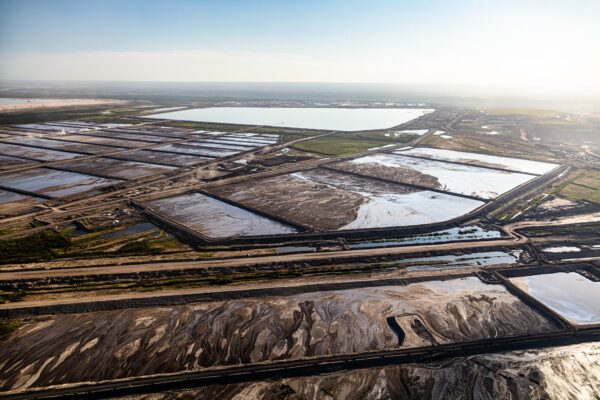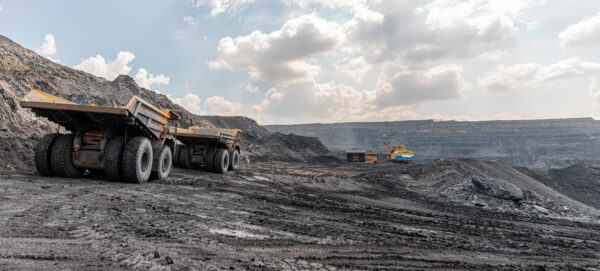A fireside conversation between Peter Bryant and Brandon Craig at the NCEA report release reveals why the mining industry is more worried than policymakers realize
As the National Center for Energy Analytics released its latest assessment of America’s energy transition roadmap this week, a serious discussion took place in a fireside chat between Clareo Board Chair Peter Bryant and Brandon Craig, President of BHP Americas. The topic was copper, not rare earths or lithium, and it’s all about the numbers.
“We’re discussing a production shortfall of nearly 10 million tonnes, or 30 to 40% of output by 2035,” Bryant began, getting straight to the main issue. “That’s the equivalent of what is needed annually for 22 Californian or UK grids.”
Craig, representing the world’s largest copper producer, didn’t paint a softer picture. He explained that the scale of the challenge becomes clear when you understand BHP operates Escondida Mine in Chile, currently the world’s largest copper mine, producing just over 1 million tonnes annually. “We would have to build the equivalent of 10 of those mines over the next 10 years,” he explained. “And you do the maths based on how long it takes to get the permits and develop a large-scale greenfield site.” Currently, that figure is 29 years from discovery to production for a major copper project.
Geological roadblocks
The conversation revealed why supply isn’t about discovering more deposits or drilling more quickly. Copper’s geological realities have fundamentally shifted, and the industry faces more challenging constraints than most people outside mining understand.
Craig openly outlined the range of challenges, as someone who faces them daily. Copper mines are going deeper underground or higher into the Andes, making infrastructure access extremely tough. The capital costs for the required scale of mines have risen sharply. “Copper is in a very unique situation where we have to accelerate permitting, we have to get infrastructure support, and we have to invest in innovation to do a better job of discovering the future copper resources we need, as well as managing the increasing technological and logistics complexities,” he noted.
The risk profile changes when mines go underground because supply disruptions become more likely. Craig pointed to recent events like Grasberg as evidence that this is a real issue, not just a theory. Furthermore, 20% of current production is already offline for various reasons.
Innovation without illusions
Bryant raised an important question for downstream companies: if the energy and water intensity of copper production continues to increase, and if accessing the ore becomes fundamentally more difficult, where does innovation fit in?
Craig’s answer was refreshingly specific about what might actually work and at what scale. He explained that there’s been significant investment into leaching technologies and different flow sheets, particularly for smaller-scale projects where building a full smelter doesn’t make economic sense. Traditional pyrometallurgical smelting works well for massive operations like Escondida precisely because of its scale.
For smaller deposits or lower-grade resources currently considered uneconomic, leaching offers real potential – but the technology must demonstrate it can achieve the required recovery levels economically. “If you could get the leaching to work at the right required levels of recovery, that would be a far more economical investment,” he noted, before adding a critical caveat, “But a lot of that is obviously still under development.”
The social license dimension
The conversation shifted to a topic that is often reduced to a ‘community relations’ checkbox: Indigenous engagement. Bryant, who is also a co-founder of the non-profit Development Partner Institute (DPI) which works extensively with Indigenous communities, raised concerns that the rush to secure critical minerals might sideline their efforts to capture more value and reduce negative impacts from mining.
Craig’s response showed how BHP sees this differently from the common industry stereotype. “You cannot operate a modern mine without the support of the communities and the First Nations people that surround that mine,” he stated. But instead of seeing this as a simple duty, he described it as a competitive advantage.
“When you work cooperatively with First Nations groups, it positively impacts the process by speeding up permits and building strong stakeholder or ally relationships in your project,” Craig explained. The main difference is to begin with genuine intent focused on capacity-building and economic empowerment right from the start, rather than trying to mend relationships later. “Where companies often face issues is when they move ahead without considering this,” he noted.
Bryant introduced the concept of the ‘Triangle of Trust’ involving the company, Indigenous communities, and governments. Craig expanded on this, highlighting that simply meeting minimum regulatory requirements misses the point entirely. “Government normally sets up regulations but their actions don’t necessarily set up a project to be able to move faster or create the right level of benefits.”
BHP sees poverty and unemployment around mine sites, which can operate for 50 to 80 years, as bad business. “We have a unique advantage over government in that where we mine tends to be more in First Nations or Indigenous areas, more so than any other business group,” Craig noted. Mining companies thus have a natural role – perhaps obligation – to drive economic empowerment in these regions. Done right, it creates competitive businesses that become valuable suppliers to the mine, and in some cases grow into regional or even state-level players.
The market signal gap
Bryant brought the conversation to a frank conclusion – it’s hard not to see a copper shortage looming, and the unanimous opinion from industry leaders is clear – nobody knows where all this copper will come from.
“There’s no shortage of copper worldwide, but there’s a shortage of high-quality copper,” Craig explained. Lower-grade resources are available, and the market will eventually respond, but only when price signals reach a level that makes developing those resources economically viable.
The price hasn’t responded appropriately yet. Current copper prices support the development of higher-quality resources but haven’t yet reached a point where lower-quality resources become viable. “When the market signals this viability, you’ll see a quick investment response,” Craig predicted. “The best precedent is iron ore from 2005 to 2015, when prices jumped from $20 per tonne to $80-100, and investment flooded into the sector.”
The reality check
Craig offered a final observation that downstream companies would be wise to internalize – 29 years from discovery to development is the current reality.
This means the deficit isn’t something to consider in some distant future. It’s inevitable unless market forces and policy responses speed up in ways we haven’t yet seen.
There’s no shortage of copper in the ground. There’s a shortage of copper we can actually bring to market within the timeframe the energy transition demands.





